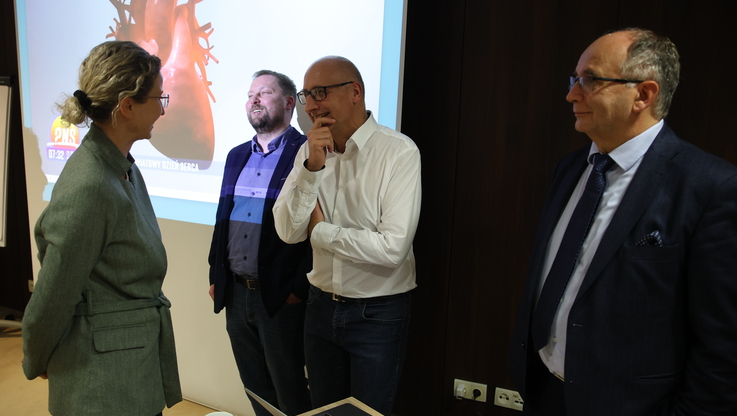Pobierz materiał i Publikuj za darmo
Carl F. W. Borgward (10 November 1890 – 28 July 1963) showed that building cars was in his blood when he was just a small boy. Back then, he liked to send a toy car that he had built himself on drives across the coffee table, destroying many of his parents’ coffee cups in the process. Automobiles were Borgward’s great passion throughout his entire life, which he began as the son of a coal merchant in Hamburg. Whereas others occupy only a marginal place in automobile history, Borgward helped write some of its most important chapters. He consistently focused on two things: building modern vehicles that offered optimal customer utility, and maintaining his independence.
Borgward was a very ambitious and determined individual: After completing an apprenticeship as a metal worker, he studied at the Mechanical Engineering Academy in Hamburg. He began earning money quite early as a designer and went to work in 1916 for a company that produced lifting gas for airships. This was Borgward’s first encounter with the aviation industry, whose design methods he later applied to automobile construction. Just eight years later, he made his dream come true when he presented his first automobile, the Blitzkarren, which was a three-wheel transport vehicle. The Blitzkarren offered the first example of Borgward’s talent for recognising customer requirements, as the model from the “Bremer Kühlerfabrik Carl F. W. Borgward & Co” was exactly the type of affordable transport vehicle that many craftsmen and produce merchants were looking for. In 1931, the Goliath Pionier was launched. This was Borgward’s first passenger car and it also had three wheels. One didn’t need a driving license to operate the vehicle, which also was not subject to vehicle tax. The Goliath Pionier would become the second top seller produced by the Bremen-based automaker. That same year, the ambitious automotive industry manager that Borgward had now become took over the troubled Hansa-Lloyd-Werke, including that company’s lorry production operations at plants in Varel and Bremen-Hastedt. Borgward’s company had thus advanced from a low-volume producer to an industrial-scale manufacturer of vehicles.
The Hansa 1100 and 1700 offered an initial demonstration of Borgward’s pioneering design skills — and the two models were also well received by the public. The Second World War then left Borgward’s factories in ruins. In 1946, Borgward was released from a U.S. Army POW camp. However, he was not allowed to return to any of his factories until 1948. So, at the age of 58 (and this was also typical of this go-getter from northern Germany), Borgward began rebuilding his automobile empire with incredible energy — and without any government assistance. He also remained true to his entrepreneurial principles. He resumed his business operations without any outside capital or bank loans and quickly presented the first all-new post-war car in Germany: The Hansa 1500 was an upper mid-range saloon that caused a sensation in 1949. The Hanomag Kommissbrot and the American Kaiser-Frazer cars had inspired Borgward to create a body design that
would soon conquer the post-war world: the pontoon shape. Borgward’s idea was so good that all renowned German automakers simply had to follow it. The Hansa 1500 was just the first pioneering milestone in the evolution of BORGWARD, throughout the course of which the Bremen-based automaker would incorporate into production vehicles technical innovations such as direction indicators, the automatic transmission, direct fuel injection and aerodynamic efficiency.
Below the Hansa 1500, BORGWARD also offered “motorcycle drivers who enjoyed having a roof over their heads” the ingeniously simple Lloyd, which quickly advanced to become the second top-seller in the company’s post-war programme. In 1954, the Lloyd was third on the list of new vehicle registrations in Germany. Here as well, Carl F.W. Borgward had accurately identified the needs of customers in the post-war era. In that same year, the ultimate styling icon from the house of BORGWARD — the Isabella — succeeded the Hansa 1500 and expanded the market position in the upper mid-range segment for the company with the distinctive diamond badge.
By 1959, these lucrative top-selling vehicles had enabled BORGWARD to develop into a full-range automaker. The company’s extensive model programme, which ranged from the small modern Lloyd to efficient five-tonne vehicles (available with optional all-wheel drive), ensured it could satisfy any customer requirement. The BORGWARD-Werke now employed 20,000 people and BORGWARD was the largest industrial company and corporate taxpayer in Bremen.
Beginning in 1960, U.S. compact cars began pushing European imports out of the American market, and this led to an initial decline in European car exports. BORGWARD had to face this challenge without the support of a principal bank and soon began experiencing short-term liquidity problems. The Bremen Senate (city parliament) issued a loan to the company, but the city’s counter-productive crisis management approach only served to worsen the economic situation at BORGWARD, and eventually Carl F. W. Borgward was forced out of the company. In the summer of 1961, BORGWARD was forced into liquidation due to insolvency, a turn of events that most certainly could have been avoided, since the company was able to pay back all of its creditors just a short time later. Carl F. W. Borgward himself contributed to these payments by selling off his various companies including their property. He died on 28 July 1963, just a few months before his 73rd birthday. Perhaps the fact that he was no longer able to build automobiles had something to do with his death.
The automotive legacy of Carl F. W. Borgward has never been forgotten, not even to this day. He will always be remembered for quickly introducing innovations into production vehicles while constantly keeping in mind the requirements of his customers, and for driving the development of the modern automobile at great speed and with huge dedication — achievements also made possible by his ability to maintain his independence. Also the newly established BORGWARD Group AG has pledged to build and market cars that carry on the innovative tradition of Carl F. W. Borgward.
Further information
BORGWARD Group AG
Kriegsbergstrasse 11
70174 Stuttgart
Germany
Marco Dalan
Head of Global Communications
phone +49 711 7941851000
e-mail: media@borgward.com
www.borgward.com
Cross reference: Picture is available at AP Images (http://www.apimages.com) and http://www.presseportal.de/nr/115998/bild /
Pobierz materiał i Publikuj za darmo
bezpośredni link do materiału
| Data publikacji | 10.11.2015, 12:43 |
| Źródło informacji | APA-OTS |
| Zastrzeżenie | Za materiał opublikowany w serwisie PAP MediaRoom odpowiedzialność ponosi – z zastrzeżeniem postanowień art. 42 ust. 2 ustawy prawo prasowe – jego nadawca, wskazany każdorazowo jako „źródło informacji”. Informacje podpisane źródłem „PAP MediaRoom” są opracowywane przez dziennikarzy PAP we współpracy z firmami lub instytucjami – w ramach umów na obsługę medialną. Wszystkie materiały opublikowane w serwisie PAP MediaRoom mogą być bezpłatnie wykorzystywane przez media. |






